-
 Bitcoin
Bitcoin $107,190.4724
-1.34% -
 Ethereum
Ethereum $2,485.5030
-1.18% -
 Tether USDt
Tether USDt $1.0002
0.02% -
 XRP
XRP $2.2435
1.58% -
 BNB
BNB $658.2175
0.28% -
 Solana
Solana $154.0094
0.27% -
 USDC
USDC $0.9999
0.02% -
 TRON
TRON $0.2796
0.98% -
 Dogecoin
Dogecoin $0.1649
-2.86% -
 Cardano
Cardano $0.5742
-0.67% -
 Hyperliquid
Hyperliquid $39.3988
-0.80% -
 Bitcoin Cash
Bitcoin Cash $506.6425
0.77% -
 Sui
Sui $2.7766
-4.26% -
 Chainlink
Chainlink $13.3342
-2.89% -
 UNUS SED LEO
UNUS SED LEO $9.0511
-0.57% -
 Avalanche
Avalanche $17.9318
-4.80% -
 Stellar
Stellar $0.2384
-0.97% -
 Toncoin
Toncoin $2.9087
-0.11% -
 Shiba Inu
Shiba Inu $0.0...01141
-3.97% -
 Litecoin
Litecoin $85.9896
-2.48% -
 Hedera
Hedera $0.1501
-1.93% -
 Monero
Monero $323.0807
3.40% -
 Polkadot
Polkadot $3.4038
-4.16% -
 Dai
Dai $1.0001
0.03% -
 Bitget Token
Bitget Token $4.5435
-1.83% -
 Ethena USDe
Ethena USDe $1.0002
0.00% -
 Uniswap
Uniswap $7.1224
-4.03% -
 Aave
Aave $275.3920
-1.27% -
 Pepe
Pepe $0.0...09756
-6.04% -
 Pi
Pi $0.5037
-5.61%
What are the margin modes of Bybit contracts? How to choose between full-position and position-by-position modes?
Bybit offers full-position and position-by-position margin modes for futures and perpetual contracts, each suited to different trading strategies and risk management needs.
May 05, 2025 at 07:50 pm
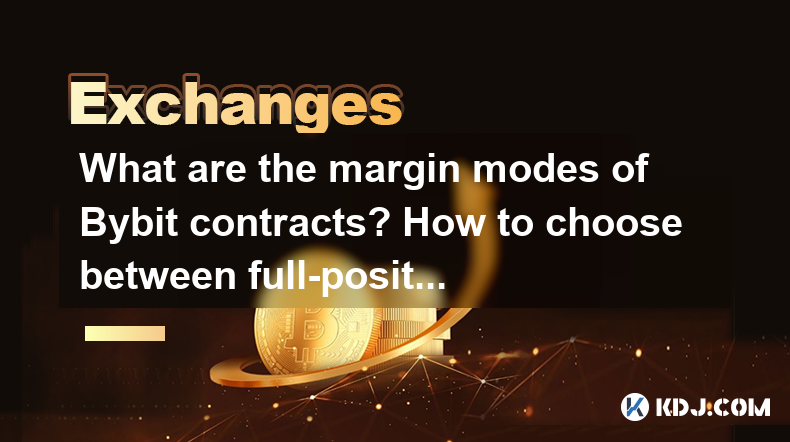
Bybit, one of the leading cryptocurrency derivatives exchanges, offers traders a variety of trading tools and features to maximize their trading potential. Among these features are different margin modes for futures and perpetual contracts. Understanding the nuances of these margin modes and how to choose between them can significantly impact your trading strategy and risk management. In this article, we will delve into the margin modes of Bybit contracts, specifically focusing on the full-position and position-by-position modes, and provide detailed guidance on how to select the most suitable mode for your trading needs.
Understanding Margin Modes in Bybit Contracts
Margin modes on Bybit refer to the ways in which traders can manage the collateral used to open and maintain positions in futures and perpetual contracts. Bybit offers two primary margin modes: full-position margin mode and position-by-position margin mode. Each mode has its own set of rules and benefits, tailored to different trading strategies and risk appetites.
Full-Position Margin Mode
Full-position margin mode is a margin system where the total margin balance in your account is used to support all open positions. This means that the margin is not allocated to individual positions but is instead pooled to cover the total exposure across all trades.
- Advantages of Full-Position Margin Mode: This mode allows for more efficient use of margin, as the total account balance can be used to support multiple positions. It is particularly beneficial for traders who manage a portfolio of positions and want to maximize their leverage across all trades.
- Risks of Full-Position Margin Mode: The primary risk is that a significant loss in one position can affect the margin available for other positions, potentially leading to liquidations across the board.
Position-By-Position Margin Mode
Position-by-position margin mode, on the other hand, allocates margin to each position individually. This means that each trade is treated separately, and the margin required for one position does not affect the margin available for other positions.
- Advantages of Position-By-Position Margin Mode: This mode is ideal for traders who want to manage risk on a per-position basis. It provides more control over each trade and helps prevent a loss in one position from affecting others.
- Risks of Position-By-Position Margin Mode: The main disadvantage is that it may require more capital, as each position needs its own margin. This can limit the number of positions a trader can open compared to full-position mode.
How to Choose Between Full-Position and Position-By-Position Modes
Choosing between full-position and position-by-position margin modes depends on several factors, including your trading strategy, risk tolerance, and capital management preferences. Here are some considerations to help you make an informed decision:
- Trading Strategy: If you are a trader who frequently opens multiple positions and wants to maximize leverage across your portfolio, full-position margin mode may be more suitable. Conversely, if you prefer to manage each trade independently and limit the risk of one position affecting others, position-by-position margin mode is likely a better choice.
- Risk Tolerance: Traders with a higher risk tolerance may prefer full-position margin mode, as it allows for greater leverage and potentially higher returns. Those with a lower risk tolerance might opt for position-by-position margin mode to better control and isolate risk.
- Capital Management: If you have limited capital and want to spread it across multiple positions, full-position margin mode can be more efficient. However, if you have sufficient capital and prefer to allocate it to individual trades, position-by-position margin mode might be more appropriate.
How to Switch Between Margin Modes on Bybit
Switching between margin modes on Bybit is a straightforward process. Here’s a step-by-step guide on how to do it:
- Log into your Bybit account: Ensure you are logged into your Bybit account and navigate to the futures or perpetual trading section.
- Access the margin mode settings: On the trading interface, locate the settings icon or menu, usually found in the top right corner of the screen. Click on it to open the settings panel.
- Select the margin mode: In the settings panel, you will find an option to switch between full-position and position-by-position margin modes. Click on the desired mode to select it.
- Confirm the change: After selecting the new margin mode, you may need to confirm the change. Follow the on-screen prompts to finalize the switch.
- Review your positions: Once the margin mode is changed, review your open positions to ensure they are adjusted according to the new mode. You may need to adjust your margin settings or close and reopen positions to align with the new mode.
Practical Examples of Margin Mode Usage
To illustrate the practical application of these margin modes, let’s consider a few examples:
- Example 1: Full-Position Margin Mode: Suppose you have a total account balance of $10,000 and you open three positions: one long on Bitcoin, one short on Ethereum, and one long on Litecoin. In full-position margin mode, the total margin of $10,000 is used to support all three positions. If the Bitcoin position incurs a significant loss, it could reduce the margin available for the other two positions, potentially leading to liquidations.
- Example 2: Position-By-Position Margin Mode: Using the same account balance and positions, but in position-by-position margin mode, each position would have its own allocated margin. If the Bitcoin position incurs a loss, it would only affect the margin for that specific position and not impact the other two positions.
Frequently Asked Questions
Q1: Can I switch between full-position and position-by-position margin modes at any time?
A1: Yes, you can switch between margin modes at any time on Bybit. However, you should review your open positions and adjust them as necessary after switching to ensure they align with the new mode.
Q2: Does switching margin modes affect my current positions?
A2: Switching margin modes can affect how margin is allocated to your current positions. In full-position margin mode, all positions will share the total account margin, while in position-by-position margin mode, each position will have its own margin allocation. You may need to adjust your positions or margin settings after switching.
Q3: Which margin mode is better for beginners?
A3: For beginners, position-by-position margin mode might be more suitable as it allows for better risk management on a per-position basis. This mode helps prevent a loss in one position from affecting others, which can be beneficial for those new to trading.
Q4: Can I use both margin modes simultaneously on Bybit?
A4: No, you can only use one margin mode at a time on Bybit. You need to choose either full-position or position-by-position margin mode for all your futures and perpetual contracts trading.
Disclaimer:info@kdj.com
The information provided is not trading advice. kdj.com does not assume any responsibility for any investments made based on the information provided in this article. Cryptocurrencies are highly volatile and it is highly recommended that you invest with caution after thorough research!
If you believe that the content used on this website infringes your copyright, please contact us immediately (info@kdj.com) and we will delete it promptly.
- Ruvi AI: Is This Token Gem Delivering Real ROI?
- 2025-07-01 06:30:11
- Bitcoin Price, Robinhood, & BTC Momentum: What's the Deal?
- 2025-07-01 06:30:11
- PNG Membership Soars to Record High: A Deep Dive into Growth and What It Means
- 2025-07-01 06:50:11
- Bitcoin's Breakout to $110K: What's the Real Deal, New York?
- 2025-07-01 06:50:11
- Valhalla Beckons: Norse Mythology Meets Blockchain Gaming
- 2025-07-01 07:10:11
- Valhalla Beckons: Norse Mythology Meets Blockchain Gaming
- 2025-07-01 06:55:12
Related knowledge
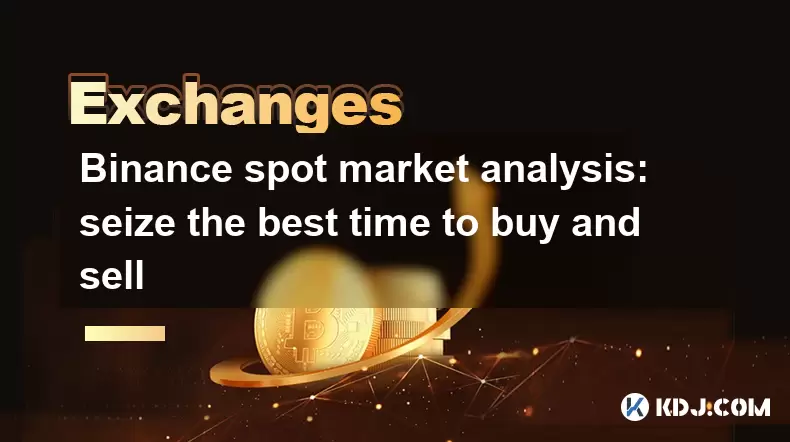
Binance spot market analysis: seize the best time to buy and sell
Jun 19,2025 at 04:56pm
Understanding the Binance Spot MarketThe Binance spot market is one of the most popular platforms for cryptocurrency trading globally. It allows users to trade digital assets at current market prices, making it essential for traders aiming to buy low and sell high. Unlike futures or margin trading, spot trading involves direct ownership of the asset aft...
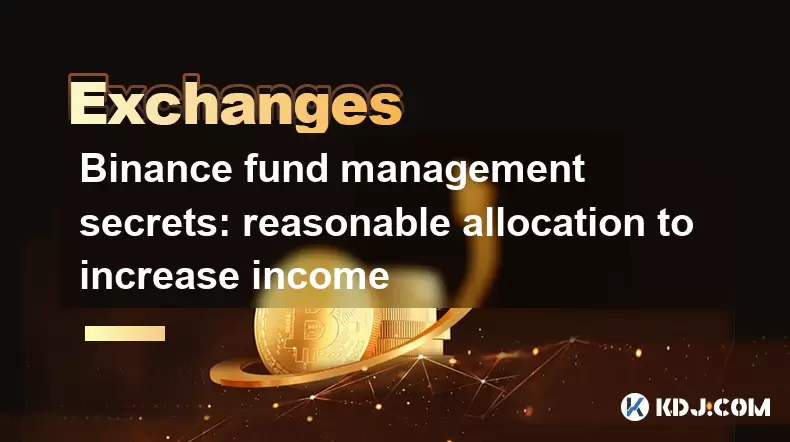
Binance fund management secrets: reasonable allocation to increase income
Jun 22,2025 at 02:29pm
Understanding Binance Fund ManagementBinance fund management involves strategic allocation of your cryptocurrency assets to optimize returns while managing risk. The key to successful fund management lies in understanding how different investment options on the Binance platform can be utilized to create a diversified portfolio. This includes spot tradin...
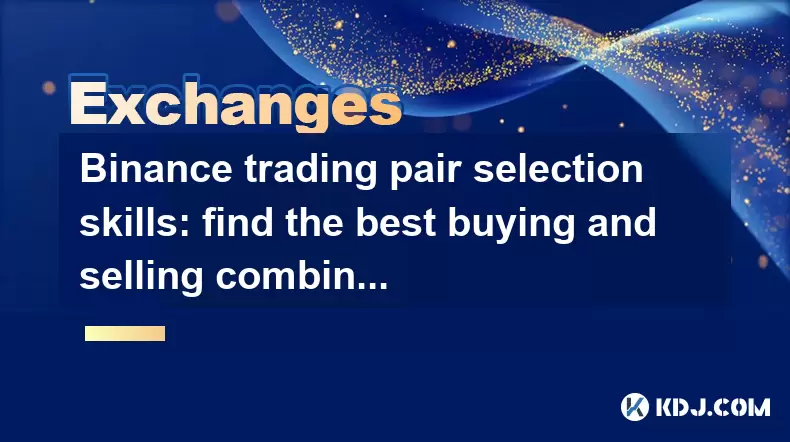
Binance trading pair selection skills: find the best buying and selling combination
Jun 23,2025 at 02:49am
Understanding the Basics of Trading Pairs on BinanceBefore diving into trading pair selection skills, it's essential to understand what a trading pair is. On Binance, a trading pair refers to two cryptocurrencies that can be traded against each other. For example, BTC/USDT means Bitcoin is being traded against Tether. Each trading pair has its own liqui...
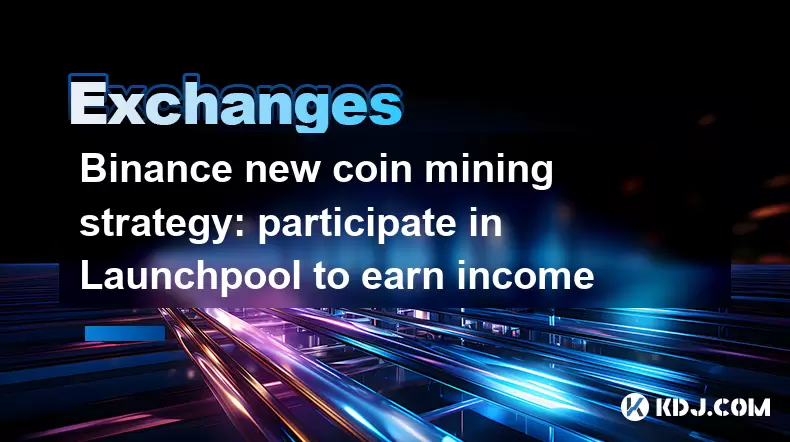
Binance new coin mining strategy: participate in Launchpool to earn income
Jun 23,2025 at 11:56am
What is Binance Launchpool and how does it work?Binance Launchpool is a feature introduced by the world’s largest cryptocurrency exchange, Binance, to allow users to earn new tokens through staking. This platform enables users to stake their existing cryptocurrencies (such as BNB, BUSD, or other supported assets) in exchange for newly launched tokens. T...
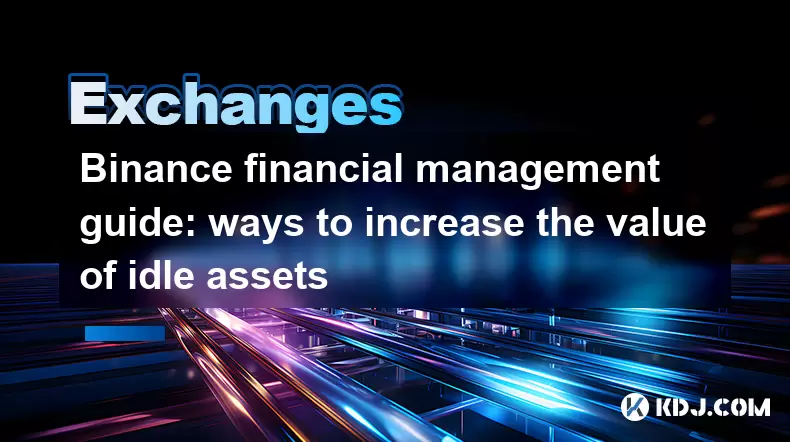
Binance financial management guide: ways to increase the value of idle assets
Jun 19,2025 at 11:22pm
Understanding Idle Assets in the Cryptocurrency SpaceIn the fast-paced world of cryptocurrency, idle assets refer to digital currencies that are not actively being used for trading, staking, or yield farming. Holding these funds in a wallet without utilizing them means missing out on potential growth opportunities. Binance, as one of the leading platfor...
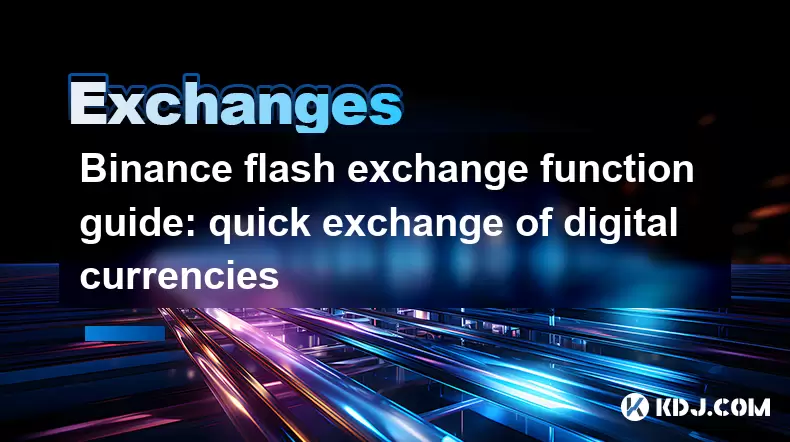
Binance flash exchange function guide: quick exchange of digital currencies
Jun 23,2025 at 12:29pm
What is the Binance Flash Exchange Function?The Binance Flash Exchange function is a powerful tool designed to allow users to instantly swap between supported cryptocurrencies without the need for placing traditional buy/sell orders. This feature simplifies the trading process by offering a direct exchange mechanism, eliminating the requirement to conve...

Binance spot market analysis: seize the best time to buy and sell
Jun 19,2025 at 04:56pm
Understanding the Binance Spot MarketThe Binance spot market is one of the most popular platforms for cryptocurrency trading globally. It allows users to trade digital assets at current market prices, making it essential for traders aiming to buy low and sell high. Unlike futures or margin trading, spot trading involves direct ownership of the asset aft...

Binance fund management secrets: reasonable allocation to increase income
Jun 22,2025 at 02:29pm
Understanding Binance Fund ManagementBinance fund management involves strategic allocation of your cryptocurrency assets to optimize returns while managing risk. The key to successful fund management lies in understanding how different investment options on the Binance platform can be utilized to create a diversified portfolio. This includes spot tradin...

Binance trading pair selection skills: find the best buying and selling combination
Jun 23,2025 at 02:49am
Understanding the Basics of Trading Pairs on BinanceBefore diving into trading pair selection skills, it's essential to understand what a trading pair is. On Binance, a trading pair refers to two cryptocurrencies that can be traded against each other. For example, BTC/USDT means Bitcoin is being traded against Tether. Each trading pair has its own liqui...

Binance new coin mining strategy: participate in Launchpool to earn income
Jun 23,2025 at 11:56am
What is Binance Launchpool and how does it work?Binance Launchpool is a feature introduced by the world’s largest cryptocurrency exchange, Binance, to allow users to earn new tokens through staking. This platform enables users to stake their existing cryptocurrencies (such as BNB, BUSD, or other supported assets) in exchange for newly launched tokens. T...

Binance financial management guide: ways to increase the value of idle assets
Jun 19,2025 at 11:22pm
Understanding Idle Assets in the Cryptocurrency SpaceIn the fast-paced world of cryptocurrency, idle assets refer to digital currencies that are not actively being used for trading, staking, or yield farming. Holding these funds in a wallet without utilizing them means missing out on potential growth opportunities. Binance, as one of the leading platfor...

Binance flash exchange function guide: quick exchange of digital currencies
Jun 23,2025 at 12:29pm
What is the Binance Flash Exchange Function?The Binance Flash Exchange function is a powerful tool designed to allow users to instantly swap between supported cryptocurrencies without the need for placing traditional buy/sell orders. This feature simplifies the trading process by offering a direct exchange mechanism, eliminating the requirement to conve...
See all articles

























































































